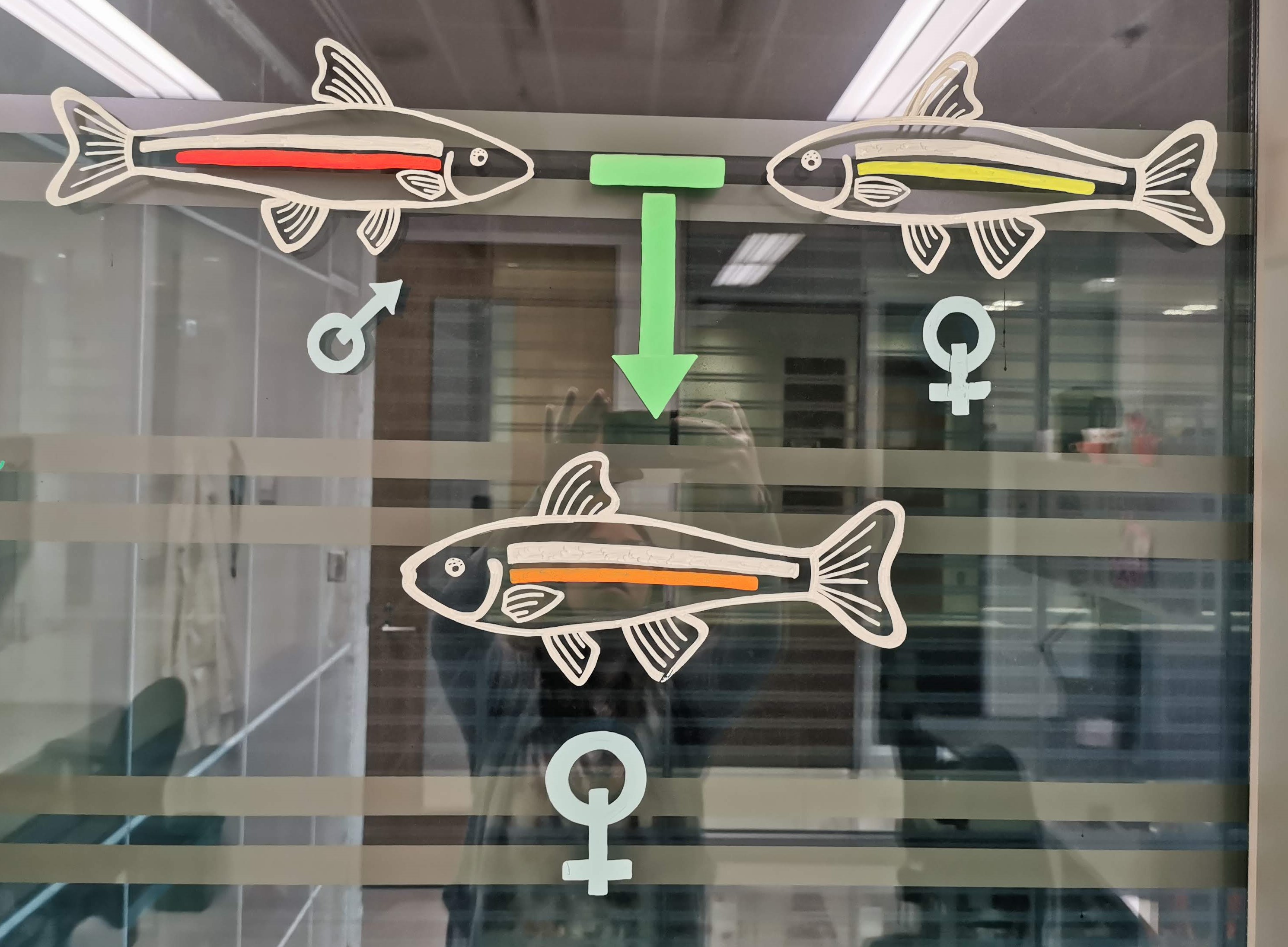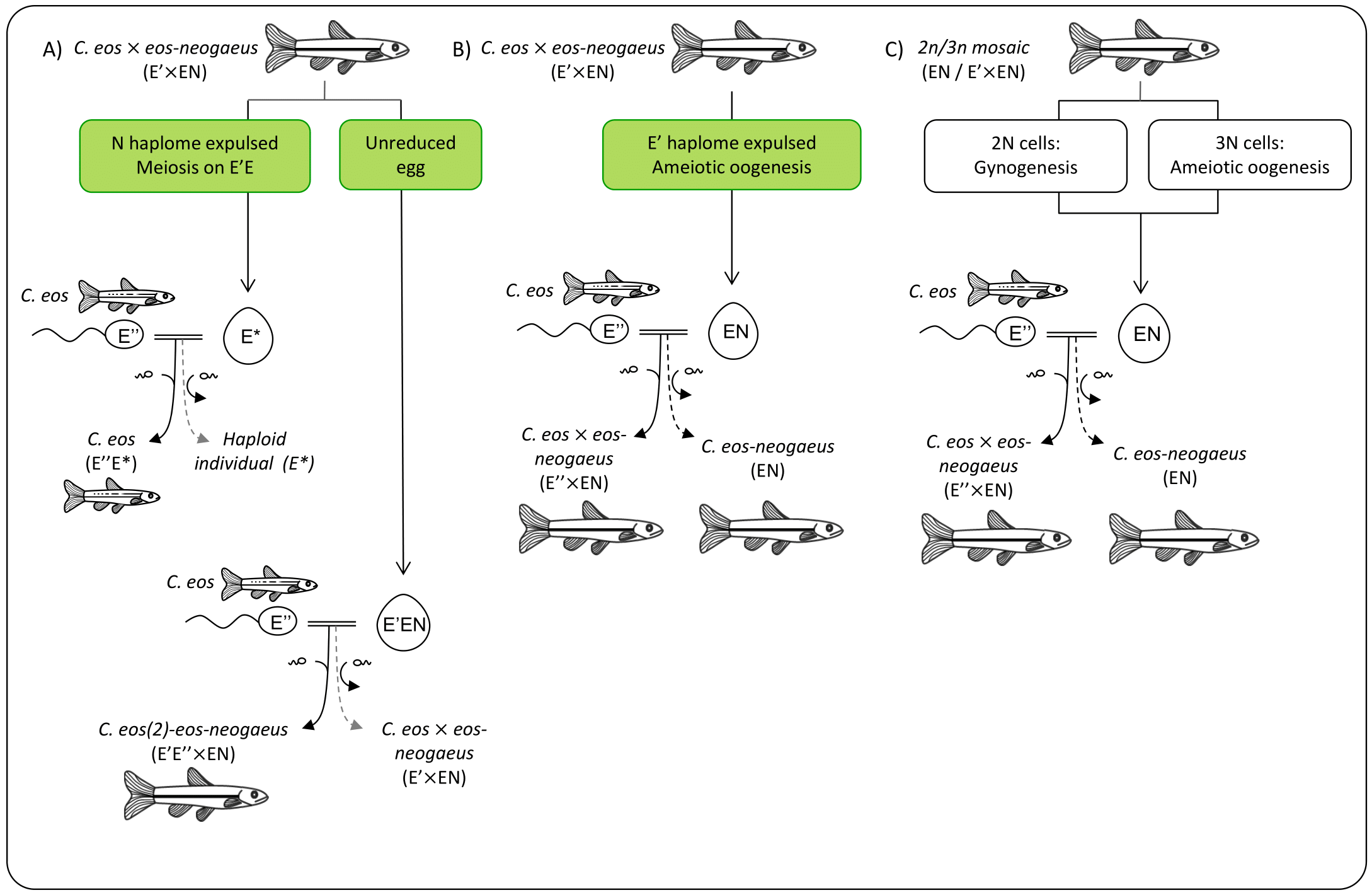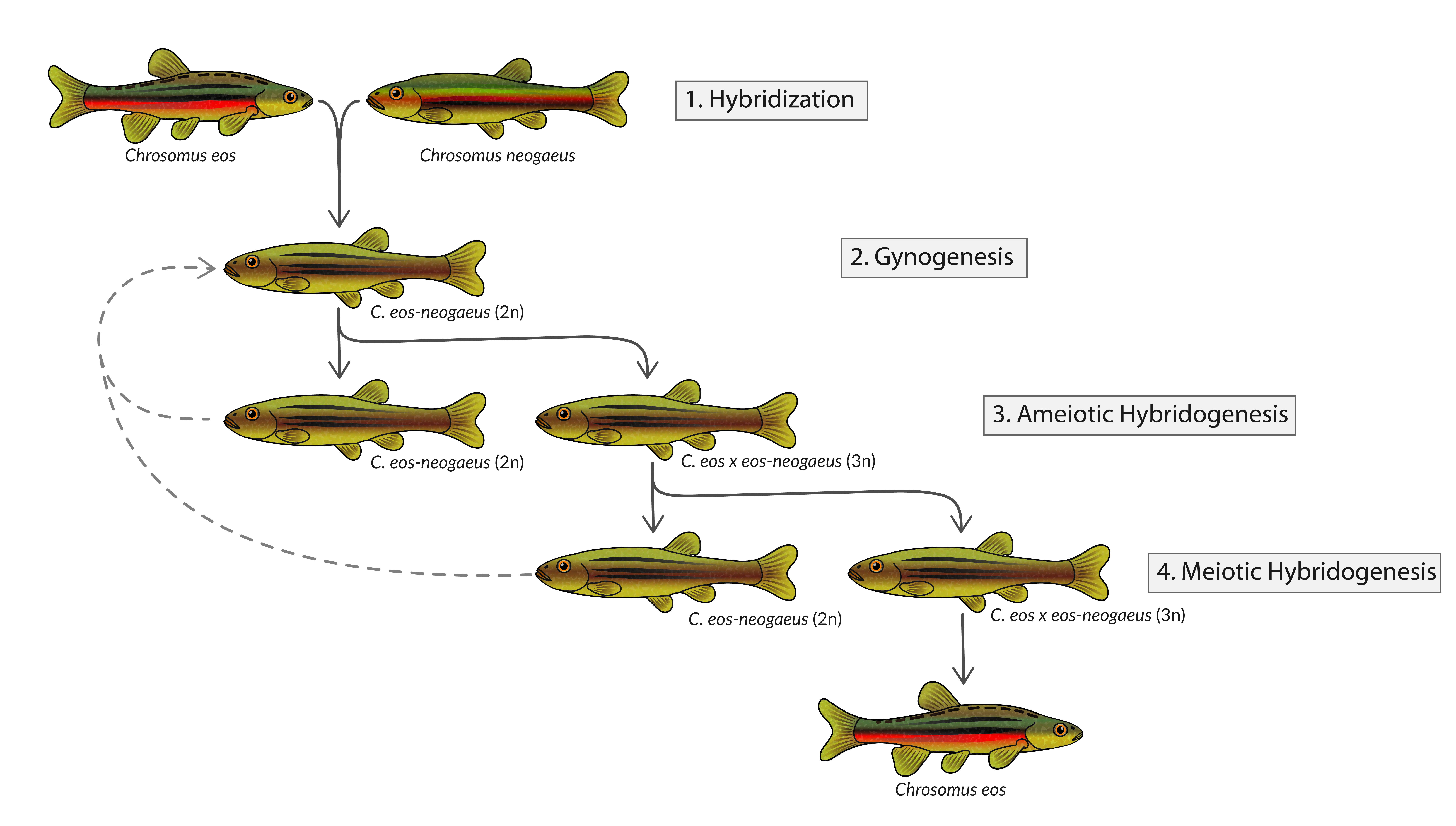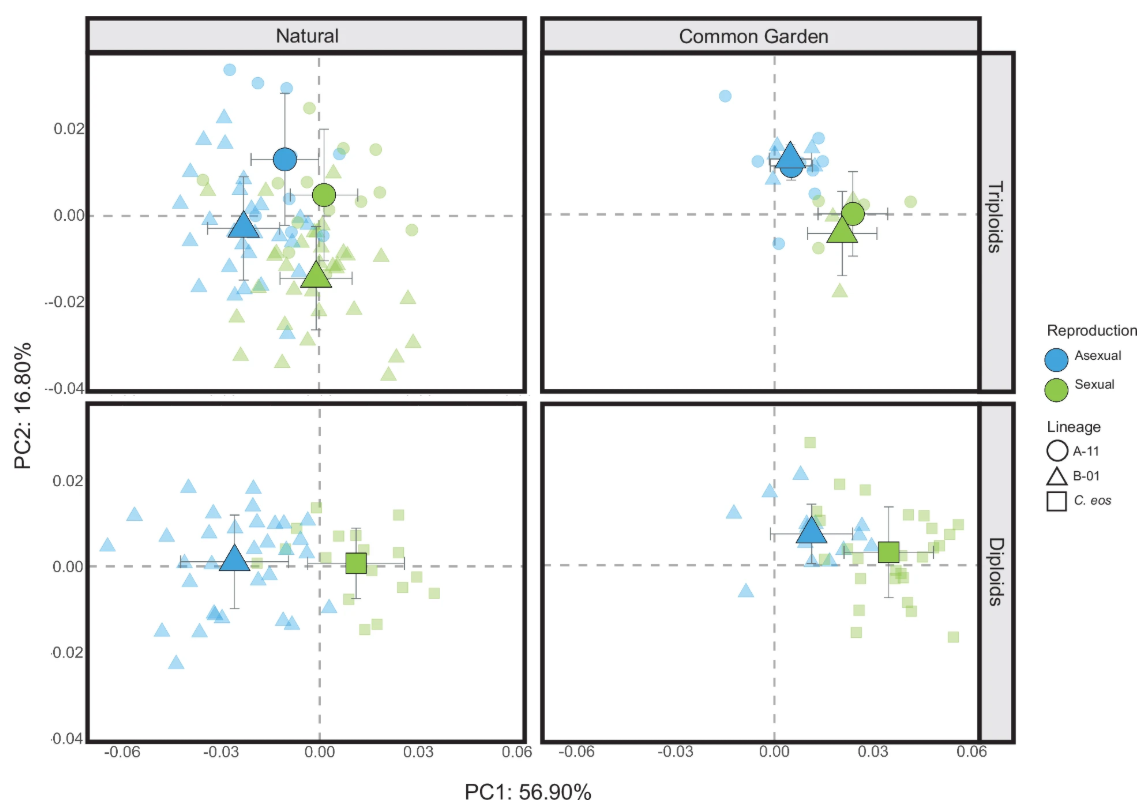Postdoctoral Research
I started my first postdoctoal experience in the lab of Dr. Judith Mank (University of British Columbia) as of June 2024. My aim in this lab is to investigate sex chromosomes evolution, namely in the light of recombinaiton loss. Stay tuned for more exciting research!
PhD Research
Jumping to the PhD right after completing my BSc, I landed in a lab that opened the world of atypical reproductions to me. I was instantly fascinated by the unexpected and unconventional ways that life has to transmit itself to the next generation.
The Chrosomus eos-neogaeus hybrid complex is a unique and fascinating study group due to its exceptional combination of sexual and asexual reproduction, polyploidy, and of course hybridization. For my PhD, my research objectives were multifaceted, as I aimed to identify the various reproductive pathways observed in these fish, characterize the origin of the reproductive dichotomy in the triploids, and the impacts of such phenotypic changes on the fish themselves. By studying this complex, I sought to uncover the functioning of reproduction in aberrant cases, shedding new light on the diverse and complex processes that drive life. Through my research, I hope to contribute to a better understanding of the fascinating and intricate world of biology.

Atypical reproductive pathways
My first research project focused on how Chrosomus eos x eos-neogaeus triploid hybrids were able to perpetuate themselves. We had, at that point, many reasons to think their reproductive success was simply low. However, we actually found that these females had a good reproductive succes and, mor eimportantly, that half of the triploid females crossed for the experiment harboured offspring through meiotic hybridogenesis, while the other half produced offspring through another, unknown type of gametogenesis, named ameiotic hybridogenesis. As well, the different types of hybridogenesis occurred in an exclusive manner, with females being able to do only one and never a mix of the two! This research shedded new light on the population dynamics of this complex and revealed a more complex picture than previously thought (Figure A).

Maternal effects and gametogenesis
In that second research project, we worked on uncovering the mechanism which produced the reproductive dichotomy in triploid hybrids. We found out that epigenetic patterns in females of a certain reproduction group was concordant with the epigenetic patterns of young larvae, raised in common garden conditions, according to their maternal origin. this led us to suggest that the ploidy of the hybrid mothers would impact the larvae's gonadal development, leading to either reproductive pathway (Figure B). This is the first supposed maternal effect influencing reproductive processes!

The shape of asexuality
In my third and last PhD chapter, we investigated whether the two groups of triploid females, one that reproduce sexually and the other asexually, would differ in their non-sexual traits. These females are an awesome model, since we do not expect them to have differences in their genetics, sexual selection or any other confounding effects – that we could think of, at least! Analyzing the shape of their head resulted in a highly marked difference, that was also found to be not only between triploids, but between the sexual and asexual members of the C. eos-neogaeus complex (Figure C). This observation suggests that the differentiation of the gonads can have a broad developmental impact in organisms.

